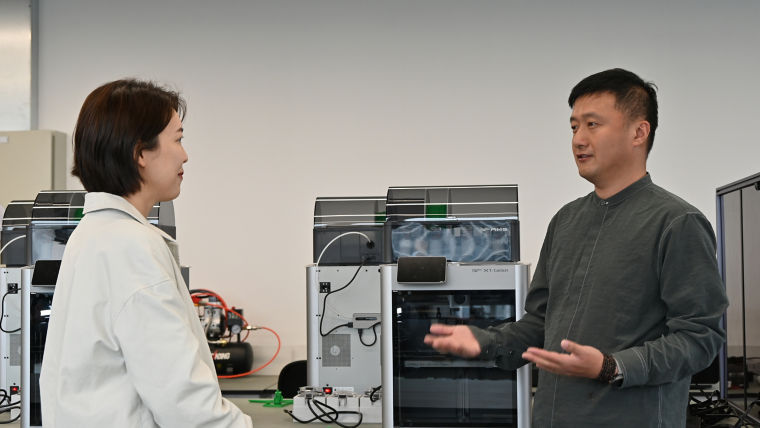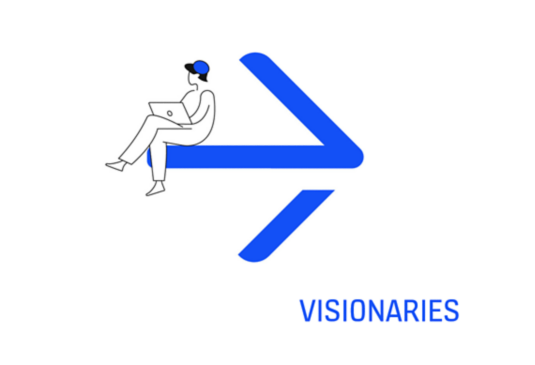
In his lifetime, Yimin Shi, KONE’s head of design, China, has seen elevators evolve from a rare extravagance to a symbol of inclusion.
“In the 1980s, elevators were only in luxury buildings in China. Climbing stairs was just a part of life,” Yimin says. “I saw my first escalator in 1990 in a new shopping mall. For a kid like me, it felt like stepping into the future. China’s economy started to boom around 2000, and elevators were a key selling point for apartments. Families wanted homes that were accessible for their parents, convenient for their children, and modern for themselves. Elevators became a symbol of progress, a sign that life was getting better.”
Today, like much of the world, China has an aging population and a significant number of older buildings that require modernization. There is a growing movement to embed inclusivity into cities and society at large. This effort extends beyond new urban infrastructure design to include older constructions that need, for instance retrofitting with modern elevators. The ongoing change from “old house” to “good house” in China aims to create more sustainable, comfortable, and aesthetically pleasing homes, which in turn shape future city life.
“It’s not just about convenience anymore – it’s about dignity,” Yimin continues. “For elderly residents who’ve spent decades climbing stairs, these new elevators are a lifeline, a way to stay connected to their communities.”

Designing elevators for everyone

Wang Qian, associate professor, Industrial Design School, Nanjing University of the Arts, studies how inclusive design can improve our quality of life.
“Inclusive design is all about creating spaces and products that work for everyone, no matter their age, abilities, or cultural background,” she explains. “It’s not just about making things physically accessible; it also focuses on building emotional connections and promoting social fairness.”
Nanjing University of the Arts and KONE collaborate on several projects, including a recent study on how people from different age groups experience elevators and how their experiences could be improved through inclusive design. The study found that young people, stressed about school or work, could benefit from a more calming elevator experience – achieved through smooth rides, soft lighting, and relaxing sounds. Meanwhile, middle-aged people were more interested in optimizing waiting times in their office buildings.
“Older people were more likely to think about safety,” Wang says. “Elevator doors could be designed to close gently, so people won’t worry about being caught in them. To reduce the fear of spreading germs, buttons could be made more hygienic or paired with voice commands.”
KONE already applies an inclusive design philosophy to elevators, addressing many key challenges to better meet the needs of diverse users. We have specific solutions that enhance people flow in the buildings, like KONE Elevator Call, which allows people to call elevators with their smartphones, reducing the need to push physical buttons and making user journeys within buildings smoother and more efficient.
“Inclusive design means designing so that everyone feels welcome, no matter what their individual needs,” Yimin emphasizes. “Voice commands, such as award-winning KONE KDS Home V, can be used by many groups of people, like those who have physical limitations or disabilities – or just hands full of grocery bags.”

Need for more urban space
The research of Wang and other academics is important for enhancing usability and inclusion in people’s daily lives. This is particularly relevant in China, which has experienced remarkably rapid development and urbanization in recent decades.
“In 2023, Nanjing created a barrier-free park featuring touch gardens, fragrant plants, smart voice prompts and tactile Braille signs, as well as opportunities for visually impaired individuals to run together in groups with volunteer guides,” Wang explains as an example. “The project combines public facilities design, smart technologies, and service design to create an accessible and friendly social environment.”
As cities grow and space becomes increasingly scarce, urban planners are turning to vertical solutions to free up land for green parks, both at ground level and on rooftops. In these taller structures, elevators play an even bigger role in enabling inclusivity, ensuring that all individuals, regardless of their mobility needs, can access different levels with ease.

Making inclusive solutions available
New innovations and technologies must be applied thoughtfully, however delivering high impact doesn’t necessarily need to drive up costs. It is crucial to make inclusive solutions available for everyone.
“Frugal innovation at KONE involves making our products and services affordable while using all materials in a resourceful way,” says Yimin. “An example of this is making low-cost connectivity possible with the KONE 4G Gateway device. Its minimalist, flexible design reduces material usage and production costs while improving connectivity for enabling better services and experiences.”
China’s frugal and inclusive design concepts for urban villages could serve as inspiration for other places around the globe. Urban villages are self-contained, mixed-use neighborhoods within a larger city, where many of the older mid-rise buildings were originally constructed without elevators.
“In renovating urban villages, inclusive design can meet the needs of different groups through the optimization of space and facilities and adding elevators to improve accessibility,” Wang concludes. “It can alleviate problems such as poor living experience and insufficient public services for vulnerable groups caused by high residential density.”
By continuing to prioritize inclusive design and innovative solutions, we can ensure that our cities not only meet the needs people have today but also adapt to the challenges of tomorrow.

